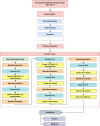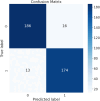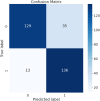Explainable deep learning approaches for high precision early melanoma detection using dermoscopic images
- PMID: 40629062
- PMCID: PMC12238264
- DOI: 10.1038/s41598-025-09938-4
Explainable deep learning approaches for high precision early melanoma detection using dermoscopic images
Abstract
Detecting skin melanoma in the early stage using dermoscopic images presents a complex challenge due to the inherent variability in images. Utilizing dermatology datasets, the study aimed to develop Automated Diagnostic Systems for early skin cancer detection. Existing methods often struggle with diverse skin types, cancer stages, and imaging conditions, highlighting a critical gap in reliability and explainability. The novel approach proposed through this research addresses this gap by utilizing a proposed model with advanced layers, including Global Average Pooling, Batch Normalization, Dropout, and dense layers with ReLU and Swish activations to improve model performance. The proposed model achieved accuracies of 95.23% and 96.48% for the two different datasets, demonstrating its robustness, reliability, and strong performance across other performance metrics. Explainable AI techniques such as Gradient-weighted Class Activation Mapping and Saliency Maps offered insights into the model's decision- making process. These advancements enhance skin cancer diagnostics, provide medical experts with resources for early detection, improve clinical outcomes, and increase acceptance of Deep Learning-based diagnostics in healthcare.
Keywords: Deep learning; Dermoscopic images; Early-stage melanoma detection; Explainable AI; Swish activation.
© 2025. The Author(s).
Conflict of interest statement
Declarations. Competing interests: The authors declare no competing interests. Ethical Statement: This study was conducted in full compliance with all applicable ethical standards. Since the research did not involve any direct human or animal subjects, ethical approval was not required. The dermoscopic image datasets used in this study were obtained from publicly available sources.
Figures














Similar articles
-
Multiclass skin lesion classification and localziation from dermoscopic images using a novel network-level fused deep architecture and explainable artificial intelligence.BMC Med Inform Decis Mak. 2025 Jul 1;25(1):215. doi: 10.1186/s12911-025-03051-2. BMC Med Inform Decis Mak. 2025. PMID: 40597254 Free PMC article.
-
Skin-CAD: Explainable deep learning classification of skin cancer from dermoscopic images by feature selection of dual high-level CNNs features and transfer learning.Comput Biol Med. 2024 Aug;178:108798. doi: 10.1016/j.compbiomed.2024.108798. Epub 2024 Jun 25. Comput Biol Med. 2024. PMID: 38925085
-
A deep learning approach to direct immunofluorescence pattern recognition in autoimmune bullous diseases.Br J Dermatol. 2024 Jul 16;191(2):261-266. doi: 10.1093/bjd/ljae142. Br J Dermatol. 2024. PMID: 38581445
-
Enhancing and advancements in deep learning for melanoma detection: A comprehensive review.Comput Biol Med. 2025 Aug;194:110533. doi: 10.1016/j.compbiomed.2025.110533. Epub 2025 Jun 7. Comput Biol Med. 2025. PMID: 40483855 Review.
-
A systematic review on feature extraction methods and deep learning models for detection of cancerous lung nodules at an early stage -the recent trends and challenges.Biomed Phys Eng Express. 2024 Nov 20;11(1). doi: 10.1088/2057-1976/ad9154. Biomed Phys Eng Express. 2024. PMID: 39530659
Cited by
-
Early-Stage Melanoma Benchmark Dataset.Cancers (Basel). 2025 Jul 26;17(15):2476. doi: 10.3390/cancers17152476. Cancers (Basel). 2025. PMID: 40805175 Free PMC article.
References
-
- Inagaki, J., Rodriguez, V. & Bodey, G. P. Causes of death in cancer patients. Cancer33, 568–573 (1974). - PubMed
-
- World Health Organization. Radiation: Ultraviolet (uv) radiation and skin cancer | how common is skin cancer (2023). Accessed: 2023-03-02.
-
- Subramanian, R. R. et al. Skin cancer classification using convolutional neural networks. In 2021 11th International Conference on Cloud Computing, Data Science & Engineering (Confluence), 13–19 (IEEE, 2021).
-
- Piccialli, F., Di Somma, V., Giampaolo, F., Cuomo, S. & Fortino, G. A survey on deep learning in medicine: Why, how and when?. Information Fusion66, 111–137 (2021).
-
- Gandhi, S. A. & Kampp, J. Skin cancer epidemiology, detection, and management. Medical Clinics99, 1323–1335 (2015). - PubMed
MeSH terms
Grants and funding
LinkOut - more resources
Full Text Sources
Medical
Miscellaneous

